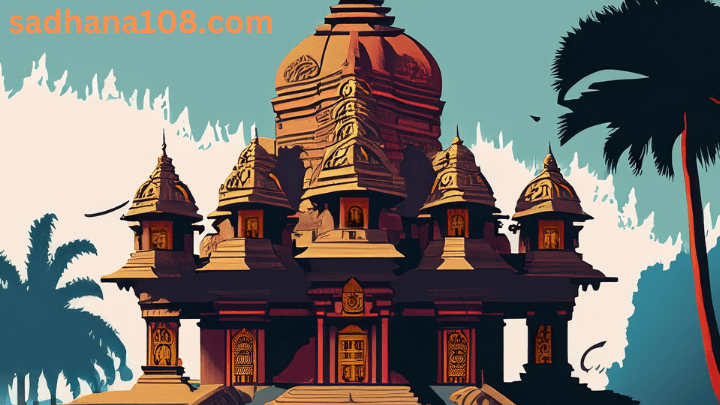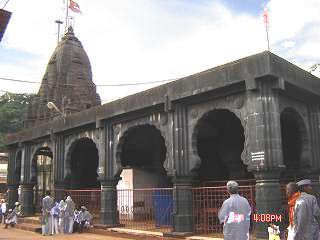Bhimashankar Temple


Bhimashankar Temple is a Jyotirlinga shrine located 50 km northwest of Khed (alias Rajguru Nagar), near Pune, in India. It is located 127 km from Shivaji Nagar (in Pune) in the Ghat region of the Sahyadri hills. Bhimashankar Temple is also the source of the river Bhima, which flows southeast and merges with the Krishna river near Raichur. The other Jyotirlinga shrines in Maharashtra are Trimbakeshwara near Nashik and Grishneshwar near Aurangabad .
Long ago, in the dense forests of Dākini, on the lofty ranges of the Sahyādrīs lived the evil Asura by the name Bhīmā with his mother Karkati. Compassion and kindness shivered in the presence of Bhīmā. The divine and the mortals were scared of him alike. But he was confronted by certain questions about his own existence which continuously tormented him. When Bhīmā could no longer sustain his agony and curiosity, he asked his mother to unveil the mysteries of his life. He urged his mother to tell him who his father was and why he had abandoned them in the wilderness of the forest. After much hesitation and with a lingering fear Karkati, his mother revealed to him that he was the son of the mighty Kumbhakarna, the younger brother of the Lankādhīshwar, the mighty all powerful King Rāvana of Lanka.
Lord Vishnu in his incarnation as Lord Rāma annihilated Kumbhakarna. Karkati told Bhīmā, that her husband and his father was killed by Rām in the great war. This infuriated Bhīmā and he vowed to take revenge against Lord Vishnu. To achieve this, he embarked on a severe penance to please Lord Brahma. The compassionate creator was pleased by the dedicated devotee and granted him immense powers. This was a terrible mistake by Brahma. The evil tyrant caused havoc in all the three worlds. He defeated King Indra and conquered the heavens. He also defeated a staunch devotee of Lord Shiva - Kāmaroopeshwar and put him in the dungeons. He started torturing Rishies and Sadhus.
All this angered the Gods. All the Devas, along with Lord Brahma, beseeched Lord Shiva to come to their rescue. Lord Shiva consoled the Gods and agreed to rescue them from the tyrant. On the other hand, Bhīmā insists and orders Kāmaroopeshwar to worship him instead of Lord Shiva. When Kāmaroopeshwar did not do that and refused to do pooja to him, the tyrant Bhīmā raised his sword to strike the Shiva Linga, to which Kāmaroopeshwar was doing abhishekam and pooja. As soon as Bhīmā managed to raise his sword, Lord Shiva appeared before him in all his magnificence. Then a terrible war began. Then, the holy sage Narada appeared and requested Lord Shiva to put an end to this war. It was then that Lord Shiva reduced the evil demon to ashes and thus concluded the saga of tyranny. All the Gods and the holy sages present there requested Lord Shiva to make this place his abode. Lord Shiva thus manifested himself in the form of the Bhīmāshankar Jyotirlingam.
It is believed that the sweat that poured forth from Lord Shiva's body after the battle formed the Bhīmārathi River. This Bhimashankar Temple is closely associated with the legend of Shiva slaying the demon Tripurāsura associated with the invincible flying citadels, the "Tripurās". Shiva is said to have made this His abode in the Bhimashankar Temple form, upon the request of the Gods, on the crest of the Sahyādrī hills, and the sweat that poured forth from his body after the battle is said to have formed the Bhīmārathi river.